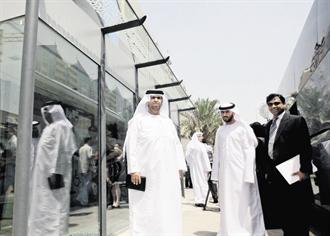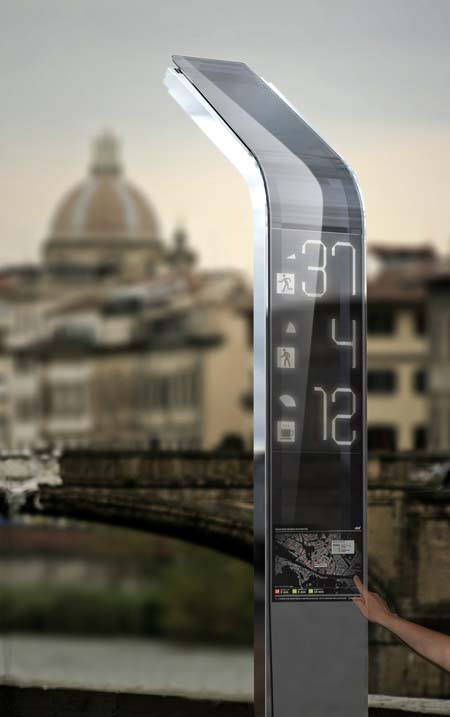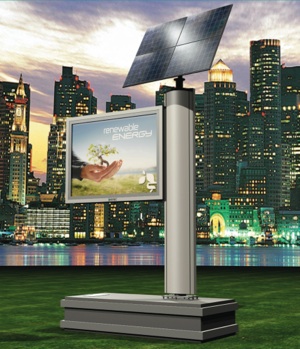Blog
New study: Digital Billboards Are Safe
Source: MediaPost, by Erik Sass, Friday, November 20, 2009
A new study from Tantala Associates, commissioned by the Outdoor Advertising Association of America, hammers home the point that digital billboards are not correlated with traffic accidents. This finding provides additional ammunition to billboard owners trying to persuade local governments and community organizations that the eye-catching displays are safe.
The new Tantala study — the third in a series performed for the OAAA — returned to Cuyahoga County, Ohio, which includes Cleveland and its surrounding suburbs. Tantala reviewed police records for 60,000 traffic accidents taking place in the county over an eight-year period, comparing accident rates from a four-year period before digital billboards were installed with the four-year period following their installation.
Tantala analyzed data documenting the location, time of day, and the direction and speed of the vehicles involved in each accident (including accidents on stretches of road where digital billboards are visible, as well as accidents elsewhere) and found there is no statistical correlation between accidents and visual exposure to digital billboards, by day or night. Rather, Tantala found that overall accident rates in the county have decreased over the last four years, even on stretches of road where digital billboards are visible.
This study reinforces Tantala’s findings in its two previous studies of the issue. In April Tantala published the results of its analysis of police records documenting 18,000 traffic accidents that took place in the area of Rochester, N.Y., over a five-year period, which also showed no statistical correlation between digital billboards and accidents. Two years before that Tantala completed its first study of accident rates in the Cleveland metro area for the OAAA.
Around the same time as the first Tantala study, Virginia Tech completed a survey about the effects of signs on drivers. Conducted by the Center for Automotive Safety Research at Virginia Tech’s Transportation Institute, the study observed measures like eye-glance patterns, speed maintenance and lane-keeping, and found no substantial changes in behavior patterns in the presence of digital signage.
Traffic safety has been a hot topic in the ongoing public debate over digital billboards, with opponents claiming the displays’ bright lights and motion distract drivers and cause accidents. However, the last couple years have also seen increasing opposition on purely aesthetic and economic grounds: some neighborhood associations in Los Angeles, for example, say digital billboards are unsightly and lower property values.
Bus shelters with air-conditioning
 Abu Dhabi has installed 20 air-conditioned bus shelters in Abu Dhabi. This is only the first phase in the bus stops project, as the Department promised to deliver, throughout the Abu Dhabi emirate, 80 such shelters by the end of September 2009 and 550 by 2011, all at the cost of Dh100 million.
Abu Dhabi has installed 20 air-conditioned bus shelters in Abu Dhabi. This is only the first phase in the bus stops project, as the Department promised to deliver, throughout the Abu Dhabi emirate, 80 such shelters by the end of September 2009 and 550 by 2011, all at the cost of Dh100 million.
The new shelters are fully enclosed, with front glass panels and fully insulated, double sided back panels, able to retain the cool air. A push button opens the sliding doors from outside and, from inside, a sensor allows automatic opening and closing. There are eight, fairly large stainless steel seats, as well as a space for one wheelchair. A city map showing the bus network and listing bus timetable and points of interest in the area is displayed inside the shelter, along with signs for no smoking and no eating or drinking.
CCTV cameras are being fixed, to make sure no one abuses the shelters.
The programmed air-conditioning is working 18 hours per day, for as long as the bus is in service. The energy consumption is going to be very low, a maximum of 14 kilowatts per hour being allowed per unit, although less that is expected to be used for each shelter. It is considered using solar power for the shelters, and even bringing in electrical buses, but these eco-friendly measures are still being studied.
The first 20 shelters are mostly located at bus stops near hospitals and schools, to help, first of all, mothers and children.
The installation of the bus shelters is part of the implementation of the Surface Transport Master Plan, which has been developed to support Abu Dhabi’s environmental, economic and cultural goals outlined in Plan Abu Dhabi 2030.
MIT designing futuristic bus stops with integrated digital signage

FLORENCE, Italy — MIT architects and engineers have unveiled EyeStop, an interactive bus stop designed for the city of Florence. The project was presented officially on Saturday, May 16, at the Genio Fiorentino by the president of the Province of Florence, Matteo Renzi. Source: www.digitalsignagetoday.com.
EyeStop, developed by MIT’s SENSEable City Lab, is an exploration into the next generation of smart urban furniture; it aims to enrich the city with state of the art sensing technologies, interactive services, community information and entertainment. The project is partially covered with touch-sensitive e-INK and screens, so that it can deliver information to people seamlessly. Users can plan a bus trip on an interactive map, exchange community-relevant information on a digital message board, surf the Web, monitor their real time exposure to pollutants and use their mobile devices as an interface with the bus shelter.
“Interacting with EyeStop could change the access to urban information in a similar way to how the iPhone has changed our mobile life,” said Carlo Ratti, head of the SENSEable City Lab at MIT.
At the touch of a finger users can indicate their desired destination; the system will then display the shortest bus route from where they are and the position of all relevant buses real-time. The EyeStop will glow at different levels of intensity to signal the distance of an approaching bus. Riders and passers-by can also post ads and community announcements to an electronic bulletin board placed on the bus stop, enhancing its functionality as a public space — a place to gather and exchange community-relevant information.
In addition to displaying information, the bus stop also acts as an active environmental sensing node, powering itself through sunlight and collecting real-time information about air quality and the urban environment.
“EyeStop is an experiment into urban computing: it may be considered an ‘info-tape’ that snakes through the city, rising up like a pole or cropping out of the sidewalk like a shelter. It senses information about the environment and distributes it in a form accessible to all citizens,” said project leader Giovanni de Niederhousern.
A generative parametric model produces a unique design for each bus stop, providing both optimal sheltering for users and maximum sunlight exposure for direct photovoltaic powering. Unlike the typical mass-produced bus stop, EyeStop is designed to fit the physical characteristics of its surroundings, with each unit being slightly different from the others. Furthermore, simple materials like shiny steel, extra clear glass and gray local stone (pietra serena), together with its minimalist design, serve to optimize how it blends into the historic urban fabric of Florence.
“Since the Renaissance, there has been an interplay between the physical form of the city (urb) and its citizenship (civitas),” added Ratti. “Today’s technologies are adding new possibilities to that age-long relationship, thanks to the addition of digital information to physical space.”
EyeStop was developed at the SENSEable City Laboratory by Giovanni de Niederhousern, Shaocong Zhou, Assaf Biderman and Carlo Ratti, in collaboration with the Province of Florence and the local public transportation authority ATAF.

The first totally solar-driven billboard scroller
 The German company DISTEC has developed the first solar-driven scroller for outdoor advertising. It generates its own electricity. No CO² emission. 100% energy self-sufficient system that can be operated at remote locations. Very simple (in their own words): A revolutionary development in green outdoor advertising. We fully agree.
The German company DISTEC has developed the first solar-driven scroller for outdoor advertising. It generates its own electricity. No CO² emission. 100% energy self-sufficient system that can be operated at remote locations. Very simple (in their own words): A revolutionary development in green outdoor advertising. We fully agree.
Whereas conventional electricity-driven outdoor media can only be installed at locations with direct access to the electrical grid, this innovation offers a revolutionary new flexibility to outdoor advertisers. The energy supply by state-of-the-art solar panels of the latest technology and a mounting adopted properly to each unit offer to outdoor advertising companies the flexibility to locate these scrollers at almost any locale, however remote it might be. A fixed, poured-in-place base is as possible as a temporary placement on a mobile base, offering the flexibility for portability.
The solar unit, developed by DISTEC particularly for this application, uses premium quality monocrystalline panels manufactured by Schott®. The solar unit tracks by means of a two-axis tracking system in an angle of horizontally up to 270°, and vertically up to 85°. This means that it automatically follows the course of the sun and thus generates approximately 40% more power than conventional, static solar cells. As an additional benefit, the tracking reduces the panel space needed to provide the requisite energy.
Special LED illumination equipped for solar power. With the Enblue lamps placed inside the scroller, the posters are backlit by special LED tubes of the Enblue brand. These LED tubes have been optimized for the solar powered system in terms of consumption and beam angle so that they achieve an adequate and, above all, plane illumination of the posters.
Intelligent battery charging control and a special scrolling device. The DISTEC developed intelligent battery charging control and the scrolling system, particularly optimized for this application, have been tested for months and have now matured and are ready to be brought to the market. With this battery charging system DISTEC achieves a higher yield of usable energy by a very economical energy transfer from the batteries to the scrolling device. The scrolling system itself has also been optimized to fit perfectly to the solar driven system. The battery is located in the basement.
“For the outdoor advertising companies the flexibility to install their scrollers temporarily and without the need for electricity is an absolutely new and inspiring aspect”, Michael Schoening, DISTEC’s CEO, points out. “Now, they can easily install scrollers at locations which due to missing electricity supply have so far not even been considered at all. The championship in South Africa next year is one of the first major events we are looking forward to.“
Various sizes are available
Michael Schoening points out that not only the well-established 18/1 Bogen size is available, but also larger formats, such as a 6×3 m (46-sheet) scroller, can be produced. The present stage of development offers single-sided scrollers with an illumination period of up to 8 hours. However, already within a few months, the first double-sided scroller will be ready to be launched, Michael Schoening says.
To provide a closer look at the functioning of the solar-driven scroller, DISTEC has put a short video on their website under www.distec.com/eng/news.htm. DISTEC GmbH is one of the world’s leading manufacturers of innovative outdoor advertising displays and street furniture.
Roadside ads distract drivers
New Monash University research proves visual clutter around our roads, including prominent advertising, signs or billboards, can be a distraction hazard for drivers – especially older ones.
It found the distractions delay drivers’ ability to detect a change around them – such as a vehicle changing lanes – by an average of half a second. Older drivers took the longest to react.
The comprehensive work from the Monash University Accident Research Centre (MUARC) has important implications for the design and regulation of road environments, and could lead to a new debate around the need for tighter advertising restrictions along our roads and highways.
“Driving on a typical major road is a complex activity, where drivers must process large amounts of visual information which continuously changes, and make decisions at speed,” researcher Jessica Edquist said.
“The research is very clear: as drivers we can only look at and pay attention to one thing at a time. When we are looking at a sign or a billboard, we are not looking at the road, leading to a higher accident risk.
“The amount of visual information is increasing on our roads, due to higher traffic density, more complex traffic management systems, increased commercial roadside development and increasing pressure on road authorities to permit advertising next to major roads.”
Ms Edquist conducted a series of tests with more than 100 drivers, almost half using MUARC’s hi-tech advanced driving simulator. She found drivers were distracted by billboards – they drove more slowly, took longer to change lanes in response to road signs and made more errors when changing lanes.
Older drivers in particular had difficulty detecting changes on the road and in following road sign instructions in busy environments. The finding is crucial as, due to an ageing population, there are more people aged over 65 and more are staying on the road despite age.
Ms Edquist said road authorities should carefully regulate billboards, declaring billboard-free distances around areas of high driver workload such as intersections, merges and freeway exits.
“Road authorities should also remove excessive signage, and give advance warning of hazardous situations with ‘priming’ road signs to spread the cognitive workload. These adjustments are especially important for busy roads with many other vehicles, cyclists or pedestrians,” she said.
Her work has already led to changes in Queensland and will provide evidence to bolster the arguments made by road authorities that roadside advertising should sometimes be restricted on safety grounds.
Ms Edquist described three types of clutter: situational (mostly road traffic), designed (road markings and signage) and built (buildings, shop signs, and advertising billboards, making backgrounds visually complex). They needed to be considered together as they all contribute to driver workload.
Source: www.sciencealert.com